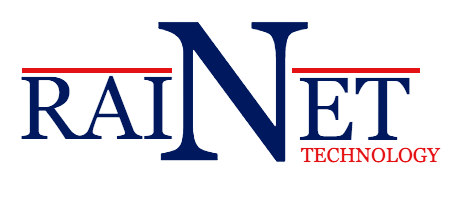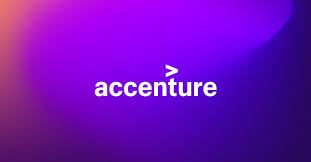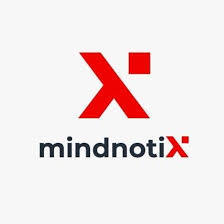#Mobile Payment Technologies Market
Explore tagged Tumblr posts
Text

A software development company that excels in providing top-notch software solutions and services to its clients worldwide. It has a team of highly skilled and experienced software professionals who are dedicated to delivering the best quality products and services. The company has a strong track record of delivering world-class software solutions to its clients. It has a team of expert developers who are well-versed in various latest technologies and they use the most advanced tools and techniques to develop high-quality software products.
The company offers a wide range of software development services such as custom software development, enterprise software development, web application development, mobile app development, eCommerce development, and many more. It has a team of experienced and certified developers who have in-depth knowledge of various latest technologies and they use the most advanced tools and techniques to develop high-quality software products. The company has a strong commitment to quality and it strictly follows the international quality standards to deliver the best quality products and services to its clients.
The company has a state-of-the-art infrastructural facility that is equipped with the latest tools and technologies. It has a team of highly qualified and experienced software professionals who are dedicated to delivering the best quality products and services. The company has a strong track record of delivering world-class software solutions to its clients. It has a team of expert developers who are well-versed in various latest technologies and they use the most advanced tools and techniques to develop high-quality software products.
Some of the popular services offered by Rainet include:
- Web Development: From building responsive websites to developing web apps, Rainet’s team of web development experts can do it all.
- App Development: The company has developed award-winning mobile apps for clients across various industries.
- Digital Marketing: Rainet’s digital marketing services help businesses reach their target audience and generate leads.
- UI/UX Design: The company’s team of UI/UX designers create beautiful and user-friendly designs that help businesses achieve their goals.
Visit Our Website:
Rainet Technology: - https://rainet.co.in/
#Rainet#Rainet Technology Private Limited#Android App Development#Mobile App Development#IOS App Development#education portal development company#Bike Rental App Development Service#domestic money transfer api provider#digital marketing agency#aeps api integration#pan verification api#bharat bill payment system api#fintech companies in noida#recharge and development#multi recharge software#bbps api provider#bbps api#android app developer company#api service
0 notes
Text

Based on the search results, here are some innovative technologies that RideBoom could implement to enhance the user experience and stay ahead of ONDC:
Enhanced Safety Measures: RideBoom has already implemented additional safety measures, including enhanced driver background checks, real-time trip monitoring, and improved emergency response protocols. [1] To stay ahead, they could further enhance safety by integrating advanced telematics and AI-powered driver monitoring systems to ensure safe driving behavior.
Personalized and Customizable Services: RideBoom could introduce a more personalized user experience by leveraging data analytics and machine learning to understand individual preferences and offer tailored services. This could include features like customizable ride preferences, personalized recommendations, and the ability to save preferred routes or driver profiles. [1]
Seamless Multimodal Integration: To provide a more comprehensive transportation solution, RideBoom could integrate with other modes of transportation, such as public transit, bike-sharing, or micro-mobility options. This would allow users to plan and book their entire journey seamlessly through the RideBoom app, enhancing the overall user experience. [1]
Sustainable and Eco-friendly Initiatives: RideBoom has already started introducing electric and hybrid vehicles to its fleet, but they could further expand their green initiatives. This could include offering incentives for eco-friendly ride choices, partnering with renewable energy providers, and implementing carbon offset programs to reduce the environmental impact of their operations. [1]
Innovative Payment and Loyalty Solutions: To stay competitive with ONDC's zero-commission model, RideBoom could explore innovative payment options, such as integrated digital wallets, subscription-based services, or loyalty programs that offer rewards and discounts to frequent users. This could help attract and retain customers by providing more value-added services. [2]
Robust Data Analytics and Predictive Capabilities: RideBoom could leverage advanced data analytics and predictive modeling to optimize their operations, anticipate demand patterns, and proactively address user needs. This could include features like dynamic pricing, intelligent routing, and personalized recommendations to enhance the overall user experience. [1]
By implementing these innovative technologies, RideBoom can differentiate itself from ONDC, provide a more seamless and personalized user experience, and stay ahead of the competition in the on-demand transportation market.
#rideboom#rideboom app#delhi rideboom#ola cabs#biketaxi#uber#rideboom taxi app#ola#uber driver#uber taxi#rideboomindia#rideboom uber
57 notes
·
View notes
Text
Arm Garage Door San Francisco CA


https://armgaragedoorsanfrancisco.com/ Our company specializes in the setup, upkeep and rectification of overhead gate accessories affirming the effortless operation of garage doors with systems like Genie, Chamberlain and Sommer motors. We integrate sophisticated technologies for optimized efficiency and trustworthy performance offering comprehensive solutions that automate garage door opening and closing for reliability and ease. call Arm Garage Door San Francisco CA on 415-907-2430 ------- Discount:- $75 Off garage doors repair service today ! ( with purchase of parts) New rollers starting as low as $99 New operators starting as low as $199 New garage doors starting as low as $249 $100 Off on all single garage doors $200 Off on double car steel insulated garage doors ------- Working Hours : 6:00 AM :11:00 PM 24 Mobile Service ------- Payment:- American Express. Cash. Discover. Mastercard. Visa. -------- Address:- 1523 Market St, San Francisco, CA 94103.
12 notes
·
View notes
Text
The **evolution of the iPhone** since its introduction in 2007 has been a defining journey in the world of smartphones, with significant advancements in design, performance, and features. Here's a brief overview of key milestones in iPhone evolution:
### 1. **iPhone (2007)**
- **Notable Features**: 3.5" touchscreen, 2 MP camera, 4GB/8GB storage.
- **Innovation**: The first touchscreen-only smartphone, removing the physical keyboard seen in other phones at the time. It introduced multi-touch technology and mobile internet.
### 2. **iPhone 3G (2008)**
- **Notable Features**: 3G network support, App Store.
- **Innovation**: Faster internet browsing with 3G connectivity and the launch of the App Store, which opened the door to third-party apps.
### 3. **iPhone 3GS (2009)**
- **Notable Features**: Faster processor, video recording, voice control.
- **Innovation**: Significant speed improvements ("S" stands for speed) and better camera capabilities, including video recording.
### 4. **iPhone 4 (2010)**
- **Notable Features**: Retina Display, FaceTime, 5 MP camera, glass design.
- **Innovation**: A major redesign with a stainless steel frame and glass front/back, and the introduction of the Retina Display, which had higher pixel density for crisper visuals.
### 5. **iPhone 4S (2011)**
- **Notable Features**: Siri, 8 MP camera, A5 chip.
- **Innovation**: Siri, the first virtual assistant on an iPhone, was introduced, along with significant camera and processor upgrades.
### 6. **iPhone 5 (2012)**
- **Notable Features**: 4" display, Lightning connector, LTE support.
- **Innovation**: The iPhone grew in size to a 4-inch screen and introduced the Lightning connector, replacing the 30-pin dock.
### 7. **iPhone 5S & 5C (2013)**
- **Notable Features (5S)**: Touch ID, 64-bit architecture.
- **Notable Features (5C)**: Colorful plastic body.
- **Innovation**: The iPhone 5S brought Touch ID for fingerprint authentication and a powerful 64-bit A7 chip. The 5C was a more affordable model with colorful designs.
### 8. **iPhone 6 & 6 Plus (2014)**
- **Notable Features**: 4.7" & 5.5" displays, Apple Pay.
- **Innovation**: Apple entered the "phablet" market with larger displays, along with introducing Apple Pay, the company's mobile payment system.
### 9. **iPhone 6S & 6S Plus (2015)**
- **Notable Features**: 3D Touch, 12 MP camera, 4K video.
- **Innovation**: The introduction of 3D Touch, which allowed the screen to detect varying levels of pressure, creating new ways to interact with the phone.
### 10. **iPhone SE (2016)**
- **Notable Features**: 4" screen, A9 chip (same as iPhone 6S).
- **Innovation**: A smaller, more affordable model, resembling the iPhone 5S but with the internal power of the iPhone 6S.
### 11. **iPhone 7 & 7 Plus (2016)**
- **Notable Features**: Dual cameras (7 Plus), no headphone jack, water resistance.
- **Innovation**: The removal of the headphone jack was controversial, and Apple also introduced dual cameras on the 7 Plus for improved zoom and portrait photography.
### 12. **iPhone 8 & 8 Plus (2017)**
- **Notable Features**: Wireless charging, glass back, True Tone display.
- **Innovation**: While similar to the iPhone 7, the 8 series introduced wireless charging through the glass back and enhanced display technology with True Tone.
### 13. **iPhone X (2017)**
- **Notable Features**: Edge-to-edge OLED display, Face ID, no home button.
- **Innovation**: A radical redesign that removed the home button and Touch ID, replacing it with Face ID, Apple’s facial recognition technology. It also introduced the first OLED display in an iPhone.
### 14. **iPhone XS, XS Max, & XR (2018)**
- **Notable Features**: Larger OLED display (XS Max), Liquid Retina display (XR), A12 chip.
- **Innovation**: The XS Max brought a massive 6.5" screen, while the XR offered a more affordable option with an LCD display but the same powerful internals.
### 15. **iPhone 11, 11 Pro, & 11 Pro Max (2019)**
- **Notable Features**: Ultra-wide camera, night mode, A13 chip.
- **Innovation**: A triple-camera system on the Pro models enhanced photography, including better low-light performance with night mode.
### 16. **iPhone SE (2nd Gen) (2020)**
- **Notable Features**: A13 chip, 4.7" display, Touch ID.
- **Innovation**: Like the original SE, this model combined older iPhone design (resembling the iPhone 8) with powerful internals from newer models, offering a budget-friendly option.
### 17. **iPhone 12 Mini, 12, 12 Pro, & 12 Pro Max (2020)**
- **Notable Features**: 5G support, MagSafe, Ceramic Shield.
- **Innovation**: The iPhone 12 series introduced 5G connectivity and the MagSafe system for attaching accessories. Ceramic Shield provided increased drop protection.
### 18. **iPhone 13 Mini, 13, 13 Pro, & 13 Pro Max (2021)**
- **Notable Features**: Smaller notch, ProMotion 120Hz display (Pro models), Cinematic Mode.
- **Innovation**: Focused on camera improvements, including Cinematic Mode for video recording, and higher refresh rate displays on the Pro models for smoother performance.
### 19. **iPhone SE (3rd Gen) (2022)**
- **Notable Features**: A15 chip, 5G, improved battery life.
- **Innovation**: Continuation of the budget-friendly SE line with more powerful internals.
### 20. **iPhone 14, 14 Plus, 14 Pro, & 14 Pro Max (2022)**
- **Notable Features**: Dynamic Island (Pro models), 48 MP camera (Pro), Always-On Display (Pro), satellite SOS.
- **Innovation**: The Pro models introduced the Dynamic Island, a new interactive notification area, along with the powerful 48 MP main camera and satellite communication for emergencies.
### 21. **iPhone 15, 15 Plus, 15 Pro, & 15 Pro Max (2023)**
- **Notable Features**: USB-C port, A17 Pro chip, Action Button (Pro models).
- **Innovation**: The transition from Lightning to USB-C for universal charging, along with enhanced performance and camera upgrades.
The iPhone's journey reflects major technological strides and design shifts, focusing on improving usability, camera quality, and processing power with each iteration.
5 notes
·
View notes
Text
Online Classified Ads: A Classic Example of C2C E-Commerce
The Power of Online Classified Ads in C2C E-Commerce

In today’s digital era, e-commerce has redefined how individuals and businesses interact, creating seamless connections between buyers and sellers. A shining example of this transformation is the rise of C2C (Consumer-to-Consumer) e-commerce, with online classified ads leading the charge. Platforms like Craigslist, OLX, and Facebook Marketplace have revolutionized the traditional marketplace by making transactions faster, more convenient, and globally accessible.
Let’s explore how online classified ads exemplify C2C e-commerce, the technology behind their success, and the significant role they play in shaping the digital economy.
What is C2C E-Commerce?
C2C e-commerce, or consumer-to-consumer electronic commerce, facilitates direct transactions between individual buyers and sellers using third-party platforms. Unlike B2C (Business-to-Consumer) or B2B (Business-to-Business) models, C2C focuses entirely on connecting consumers for transactions without a middleman business.
Online classified ads are the backbone of C2C e-commerce, acting as digital hubs where users list products and services for sale. Other users can then browse, negotiate, and purchase directly from the seller.
Why Online Classified Ads Are Ideal for C2C E-Commerce
1. Direct Consumer Interaction Classified platforms prioritize direct communication between buyers and sellers. This immediate interaction fosters trust and simplifies decision-making, making transactions quicker and more personal.
2. Low or Zero Transaction Costs Most platforms allow users to post ads for free or charge minimal fees. This affordability encourages individuals to sell items and services, creating a thriving marketplace.
3. Diverse Offerings From second-hand furniture and electronics to rental properties and job postings, online classifieds cover a broad spectrum of categories, catering to a wide range of consumer needs.
4. Global and Local Reach Users can choose between targeting local buyers for quick sales or reaching a global audience for niche products, making these platforms highly versatile.
5. User-Friendly Platforms Designed to be simple and intuitive, classified sites are accessible to users of all skill levels, enabling easy posting, browsing, and communication.
The Technology Behind Online Classified Platforms
The success of online classified ads lies in the sophisticated technologies powering these platforms:
Advanced Search Algorithms: These ensure users quickly find relevant listings based on location, category, and price.
Secure Payment Gateways: Many platforms integrate secure payment options to safeguard transactions.
Responsive Web Design: Classified platforms are optimized for mobile devices, ensuring consistent user experiences across screens.
AI-Powered Recommendations: Artificial intelligence offers personalized suggestions based on user preferences and browsing behavior.
SEO and Analytics: Platforms leverage SEO to boost the visibility of listings on search engines and use analytics to understand and enhance user engagement.
Benefits of Online Classified Ads in C2C E-Commerce
1. Empowering Small Sellers Classified ads provide a level playing field for individuals and small businesses to reach buyers without requiring a physical storefront.
2. Promoting Sustainability By encouraging the resale of second-hand goods, these platforms reduce waste and contribute to a circular economy.
3. Faster Transactions With features like instant messaging and real-time notifications, classified platforms streamline communication and accelerate deals.
4. Cost-Effective Marketing Sellers can create impactful ads with photos and detailed descriptions without needing expensive marketing campaigns.
Challenges in C2C E-Commerce via Classified Ads
Despite their advantages, online classifieds face challenges:
Trust Issues: Buyers may worry about product quality, payment security, or fraudulent listings.
Minimal Regulation: Without strict oversight, issues like spam, counterfeit goods, and misleading ads may arise.
High Competition: The abundance of listings can make it hard for sellers to stand out without investing in premium placements.
Logistics: Delivery is often left to buyers and sellers, complicating transactions for bulky or long-distance items.
How Online Classified Ads Drive C2C E-Commerce Growth
Despite these obstacles, classified platforms remain pivotal in the growth of C2C e-commerce for several reasons:
Democratization of Commerce: They empower anyone with internet access to participate in the marketplace.
Innovative Monetization: Features like promoted ads and premium listings offer additional value to users while generating revenue for platforms.
Community Building: By fostering local transactions and encouraging user feedback, classified platforms create engaged communities.
Optimizing Classified Listings with SEO
For sellers, SEO (Search Engine Optimization) is essential to boost visibility on classified platforms. Including relevant keywords like “buy and sell locally,” “best deals online,” or “affordable used goods” can significantly enhance listing performance.
Companies like KSoft Technologies specialize in web development, SEO strategies, and digital marketing, helping classified platforms and individual sellers achieve:
Higher rankings on search engines.
Enhanced user interfaces for better engagement.
Scalable and secure technology solutions.
The Future of Online Classified Ads in C2C E-Commerce
The future of online classifieds is bright, with innovations in AI, blockchain, and logistics solutions promising to address current challenges. These advancements can enhance trust, security, and overall user experiences, ensuring the continued growth of C2C e-commerce.
As technology evolves, businesses offering web development, mobile app development, and SEO services, such as KSoft Technologies, will play a vital role in empowering classified platforms to stay competitive and innovative.
Conclusion
Online classified ads are a cornerstone of C2C e-commerce, creating spaces for direct consumer interaction, affordable transactions, and sustainable commerce. By connecting buyers and sellers without traditional barriers, these platforms exemplify the potential of technology-driven marketplaces.
Whether you're looking to improve your classified platform or enhance your digital presence, KSoft Technologies offers cutting-edge solutions in web development, mobile app creation, and SEO strategies to help you thrive.
Visit KSoft Technologies today and discover how we can help elevate your business in the evolving digital economy! 🚀
#business to business#ecommerce#branding#artificial intelligence#web design#web development#seo services#techinnovation#economy#erp software#entrepreneur#adobe#technews#computer#technology
3 notes
·
View notes
Text
Title: "Gen Z Hustle: How Side Gigs and Digital Innovation are Shaping Kenya's Youth Culture"
Introduction In the bustling streets of Nairobi, young Kenyans are busy making their mark in innovative ways that go beyond traditional careers. The rise of digital technology and Kenya’s rapidly evolving economic landscape have cultivated a unique “side-hustle culture” among Generation Z, who are actively reshaping work, community, and creativity. From influencing on social media to e-commerce and even venturing into cryptocurrency, these young hustlers are defining a new Kenyan dream that is all about resilience, creativity, and financial independence.
Side-Hustles in the Age of Social Media One of the most prominent changes in Kenya’s youth culture is the significant shift from relying solely on formal employment to embracing digital side hustles. On Instagram, Twitter, and TikTok, young Kenyans are building personal brands as influencers, marketers, and content creators. This trend is largely driven by the power of social media platforms, where personalities like Azziad Nasenya and Flaqo have transformed social media virality into flourishing careers.
Platforms like TikTok and Instagram allow young Kenyans to reach broad audiences with content that resonates—comedy skits, motivational videos, makeup tutorials, and dance challenges. With brands now recognizing the influence of digital personalities, many Kenyan influencers are finding opportunities to collaborate with companies for product endorsements and advertisements. These partnerships bring a sense of visibility and empowerment that has been less accessible in traditional industries.
For 24-year-old David Mwangi, a content creator and social media strategist, the allure of influencing lies in its accessibility and potential for growth. “You don’t need a big budget to get started; you just need creativity,” he explains. David’s experience reflects the sentiment of many Gen Z Kenyans who see social media not just as a pastime but as a pathway to sustainable income.
The E-commerce Boom and the Rise of Small Online Shops In addition to influencing, e-commerce has become a major outlet for Kenyan youth looking to earn extra income. Platforms like Jumia, Kilimall, and Facebook Marketplace provide easy avenues for young entrepreneurs to start online businesses, selling anything from thrifted clothes and beauty products to locally made crafts and accessories. Kenya’s mobile payment system, M-Pesa, has also simplified transactions, allowing e-commerce to thrive even without widespread use of credit cards.
With rising unemployment rates and limited job opportunities, many young Kenyans are using digital tools to build businesses from scratch. Some youth groups have formed collectives to sell items in bulk, often buying directly from manufacturers or importing from abroad to resell at a profit. This trend, known locally as biashara za mtaa (local businesses), has created a bustling informal economy that operates largely online.
For 23-year-old Aisha Ahmed, the journey started with a Ksh 5,000 loan from her older brother. Now, she runs an online shop that specializes in selling affordable, stylish handbags through Instagram. “People think starting a business requires a lot of capital, but what really matters is finding something people need and building a brand around it,” she says.
Crypto, Forex, and the Financial Revolution Another intriguing aspect of Kenya’s Gen Z hustle culture is the growing interest in cryptocurrency and Forex trading. Although controversial, the allure of quick profits and financial independence has drawn many young people into these new financial frontiers. Kenya’s tech-savvy youth have quickly adapted to apps like Binance and Paxful, learning the intricacies of cryptocurrency trading and often mentoring each other online.
Crypto’s appeal among Gen Zers lies in its promise of empowerment and financial freedom—an opportunity to circumvent traditional banking systems. However, the lack of regulation and high risks involved have left many young Kenyans facing steep learning curves and financial losses. Despite the volatility, online communities and forums dedicated to Forex and crypto trading continue to grow, attracting young people with a “high risk, high reward” mentality.
Karanja, a 22-year-old business student, views crypto as a game-changer: “It’s the future of money,” he asserts. He has spent months learning about blockchain technology and considers it a long-term investment. Karanja’s experience highlights the optimism surrounding digital currency in Kenya, despite the risks and controversies.
Challenges Facing the Digital Hustlers While side-hustle culture has opened new opportunities, it comes with significant challenges. The competitive nature of digital influencing and e-commerce can be cutthroat, with many young people finding it hard to stand out. Mental health issues, such as stress and burnout, are becoming common among young hustlers as they juggle multiple gigs alongside their education or formal jobs.
For those in crypto and Forex, the risks are even higher. Cases of scams and Ponzi schemes have left many young investors in debt, leading some to lose faith in the industry altogether. The lack of regulation around cryptocurrency also means that youth are vulnerable to fraudsters, who often take advantage of their desire for quick financial gains.
The New Face of the Kenyan Dream Despite the challenges, side-hustle culture has become a defining feature of Gen Z in Kenya. This trend signifies a shift in how young Kenyans view success, replacing the traditional path of formal employment with a vision that values independence, innovation, and adaptability. It’s a cultural revolution rooted in digital innovation, resilience, and the determination to succeed on their own terms.
For Kenyan youth, the hustle is more than just a means to an end—it’s a way to redefine their place in society. As Aisha puts it, “It’s not just about making money; it’s about taking control of your future.”
4 notes
·
View notes
Text
Why do we choose best website development company in Indore ?
Take into account the following elements while selecting a best website development company in Indore:
Experience and Portfolio: Seek out businesses that have a solid track record and a varied portfolio that highlights their work in a range of sectors.
Technical Know-How: Verify that the business is knowledgeable about the newest programming languages and online technologies.
Customer Testimonials and Reviews: Good comments from prior customers can reveal information about the dependability and caliber of the business's work.
Range of Services: A well-rounded strategy is indicated by a full range of services, including web design, development, SEO, and digital marketing.
Support and Communication: Successful project execution depends on both continuous support and efficient communication.
Knowledge and Experience Since each of these organizations has years of experience in the field, they are able to create plans that work by using tried-and-true techniques. Their teams are made up of knowledgeable experts who keep up with the newest developments in web development trends and technologies.
Customer-focused methodology These businesses place a high value on knowing the particular needs and objectives of each of its clients. They guarantee that customers receive individualized solutions that provide outcomes by customizing their services accordingly.
Leading Industries Provided
Numerous industries are served by the top Indore website development company, including:
Healthcare: Creating patient portals and mechanisms for scheduling appointments.
Education: Creating school administration systems and e-learning platforms.
E-commerce: Establishing dependable internet shops with smooth purchasing processes.
Real estate: Creating portals with sophisticated search filters for property listings.
Hospitality: Creating websites for lodging facilities, dining establishments, and tour operators.
Finance: Establishing safe internet banking and financial services platforms.
Nonprofits: creating websites to raise money and awareness of causes.
The top Indore website development company offers a broad range of services to meet various business requirements:
Development of Custom Websites
creation of custom websites that complement the identity of the brand.
use the newest technologies to create websites that operate well.
Development of E-Commerce
development of e-commerce systems with a wealth of features and user-friendly navigation.
combining user-friendly interfaces, inventory management systems, and secure payment channels.
Systems for managing content (CMS)
creation and modification of content management system platforms, such as Magento, Joomla, and WordPress.
Assistance and instruction to enable consumers to take charge of their websites on their own.
Web design that is responsive
creating websites that fluidly adjust to different screen widths.
guaranteeing a unified and captivating user experience across platforms.
Search Engine Optimization (SEO)
Implementation of SEO-friendly website structures and meta tags.
Optimization for speed, mobile-friendliness, and content relevance.
Web Application Development
Development of custom web applications tailored to specific business processes.
Scalable solutions that grow with the business.
The top Indore website development business is distinguished by its technical expertise, customer-focused methodology, and dedication to producing outstanding outcomes. Working with a premier Indore website development company can help you turn your idea into a reality, whether you're a startup trying to get your name out there or an existing firm hoping to grow. Make informed decisions, and you'll see your company flourish in the digital sphere.

#best website development company in Indore#website#website design#web design#seo services#web development#digital marketing#best website designing company in indore#usa#usa news#web design company#seo friendly website design#web hosting
2 notes
·
View notes
Text
What are the key features of fintech solutions for business banking?

In today’s fast-paced and technology-driven world, fintech solutions have revolutionized the way businesses handle their banking needs. Fintech business banking is designed to streamline financial processes, enhance efficiency, and provide tailored solutions for businesses of all sizes. By leveraging cutting-edge technology, fintech companies are transforming traditional banking into a more dynamic, accessible, and customer-centric experience. Here, we explore the key features of fintech solutions for business banking, highlighting the impact of fintech payment systems, global reach, and the role of providers like Xettle Technologies in shaping this transformative sector.
1. Seamless Account Management
One of the primary features of fintech business banking is seamless account management. Fintech platforms offer intuitive dashboards and user-friendly interfaces that allow businesses to monitor their accounts in real-time. Features such as automated reconciliation, instant notifications, and integrated reporting tools make managing finances more efficient and less time-consuming. Business owners can track expenses, revenues, and cash flow from a single platform, ensuring they stay on top of their financial health.
2. Advanced Fintech Payment Systems
Fintech solutions are renowned for their innovative payment systems. A fintech payment system enables businesses to send and receive payments swiftly and securely. These systems often support multiple payment methods, including bank transfers, credit and debit cards, mobile wallets, and international payments. Additionally, advanced features such as recurring billing, payment reminders, and instant settlements simplify financial transactions for businesses.
Payment gateways offered by fintech companies are designed with robust security measures, including encryption and tokenization, to protect sensitive data. This level of security builds trust and ensures compliance with global financial regulations, making it easier for businesses to operate across borders.
3. Global Accessibility
Fintech global solutions provide businesses with the ability to operate seamlessly across international markets. This is particularly beneficial for businesses involved in cross-border trade. Fintech platforms facilitate currency conversions, international payments, and global compliance, reducing the complexities of managing finances in a globalized economy.
For instance, businesses can leverage fintech platforms to access multi-currency accounts, enabling them to hold and transact in various currencies without incurring high conversion fees. This global reach empowers businesses to expand their operations and cater to international clients with ease.
4. Tailored Financial Products
Fintech business banking solutions are highly customizable, offering tailored financial products that meet specific business needs. Whether it’s working capital loans, invoice financing, or expense management tools, fintech platforms provide solutions that cater to diverse industries and business models. This personalization ensures that businesses receive the support they need to grow and thrive in a competitive market.
Moreover, fintech platforms use data-driven insights to assess the financial health of businesses, enabling them to offer customized credit solutions and better interest rates compared to traditional banks.
5. Enhanced Security and Fraud Prevention
Security is a top priority in fintech business banking. Advanced fintech platforms incorporate state-of-the-art technologies such as artificial intelligence (AI), machine learning (ML), and blockchain to detect and prevent fraudulent activities. Features like two-factor authentication (2FA), biometric verification, and real-time fraud alerts provide businesses with peace of mind.
By leveraging AI and ML algorithms, fintech platforms can identify unusual transaction patterns and flag suspicious activities, minimizing the risk of financial fraud. This proactive approach to security helps businesses safeguard their assets and maintain trust with their stakeholders.
6. Integration with Business Tools
Fintech business banking solutions integrate seamlessly with other business tools, such as accounting software, customer relationship management (CRM) systems, and enterprise resource planning (ERP) platforms. This integration streamlines operations and reduces manual effort, enabling businesses to focus on core activities.
For example, automated synchronization between fintech banking platforms and accounting tools ensures that financial data is always up-to-date, reducing errors and saving time during audits and financial reporting.
7. Real-Time Data and Analytics
Access to real-time data and analytics is a game-changer for businesses. Fintech solutions provide detailed insights into financial performance, helping businesses make informed decisions. Features like cash flow forecasting, expense categorization, and trend analysis empower businesses to plan strategically and optimize their financial resources.
8. Scalability and Flexibility
Fintech platforms are designed to grow with businesses. Whether a business is a startup, SME, or large enterprise, fintech solutions offer scalability and flexibility to adapt to changing needs. As businesses expand, they can access additional features and services without facing the limitations often associated with traditional banking systems.
9. Cost-Effective Solutions
Fintech business banking is typically more cost-effective than traditional banking. By automating processes and leveraging technology, fintech platforms reduce operational costs, which translates into lower fees for businesses. Features such as free transactions, minimal account maintenance charges, and competitive interest rates make fintech solutions an attractive option for businesses looking to optimize their financial operations.
10. Support for SMEs and Startups
Small and medium-sized enterprises (SMEs) and startups often face challenges in accessing traditional banking services. Fintech solutions bridge this gap by offering accessible and inclusive banking options. Features like quick account setup, simplified loan applications, and dedicated customer support make fintech platforms a go-to choice for emerging businesses.
Xettle Technologies: A Pioneer in Fintech Business Banking
Among the many players in the fintech sector, Xettle Technologies stands out as a pioneer in delivering comprehensive fintech business banking solutions. By combining advanced technology with a customer-centric approach, Xettle Technologies empowers businesses to manage their finances effectively. Their innovative fintech payment system and global capabilities ensure that businesses can operate seamlessly in today’s interconnected world.
Conclusion
Fintech business banking has transformed the financial landscape, offering a plethora of features that cater to the evolving needs of businesses. From advanced fintech payment systems and global accessibility to enhanced security and tailored financial products, fintech solutions provide the tools necessary for businesses to thrive in a competitive market. Companies like Xettle Technologies exemplify the potential of fintech solutions to drive innovation and efficiency in business banking. As fintech global solutions continue to evolve, businesses can look forward to even more robust and dynamic banking experiences in the future.
2 notes
·
View notes
Text
A Guide to Building Your Ecommerce Website Effectively

Building an effective eCommerce website is a crucial step in creating a successful online business. The right design and functionality not only attract customers but also provide them with an enjoyable shopping experience. Wartiz Technologies, with its expertise in web development, can help you build an eCommerce development services platform that stands out in the competitive online market.
1. Define Your Goals and Audience
Before diving into the design and development, it’s essential to clearly define your business goals and target audience. Are you looking to sell products directly, provide a marketplace for other vendors, or offer a subscription-based service? Understanding these aspects will help shape the overall structure and features of your site.
At Wartiz Technologies, we work with you to pinpoint your objectives and ensure that your website reflects your vision while catering to your customer base's needs.
2. Choose the Right Platform
Selecting the right eCommerce platform is critical for long-term success. Popular options like Shopify, WooCommerce, and Magento offer various features, but it’s important to choose the one that aligns with your business needs. If you require a highly customizable site, WooCommerce or Magento might be ideal. For a simpler, user-friendly experience, Shopify could be the best fit.
Wartiz Technologies can guide you through these choices, considering factors like scalability, ease of use, payment integration, and product catalog management.
3. Design for User Experience
A user-friendly design is at the heart of every successful eCommerce website. It’s essential to create a clean, intuitive layout that makes navigation easy for visitors. The goal is to ensure that customers can quickly find what they’re looking for without getting frustrated.
Focus on:
Simplified Navigation: Categories, filters, and search options should be easily accessible.
Mobile Optimization: A mobile-friendly design is crucial as most shopping is now done on smartphones.
Visual Appeal: Use high-quality images and a consistent color scheme to match your brand.
Wartiz Technologies excels in creating responsive and visually appealing designs that enhance the overall user experience, ensuring that visitors stay engaged and convert into customers.
4. Optimize for Speed and Performance
Website performance plays a vital role in both user experience and search engine rankings. Slow-loading pages can frustrate visitors and lead to abandoned carts. Optimizing images, enabling caching, and using content delivery networks (CDNs) are some strategies to ensure fast load times.
Wartiz Technologies employs best practices to optimize the performance of your eCommerce site, reducing bounce rates and improving your site's overall effectiveness.
5. Implement Secure Payment Gateways
Security is a significant concern for online shoppers. Ensuring that your site is equipped with secure payment gateways is crucial to protect sensitive customer data. Popular options like PayPal, Stripe, and Authorize.Net offer safe and seamless payment processing.
We prioritize security at Wartiz Technologies by integrating reliable payment solutions and enabling SSL encryption to safeguard transactions.
6. SEO and Content Strategy
Search engine optimization (SEO) is fundamental for driving organic traffic to your site. Your eCommerce website should be optimized for relevant keywords, product descriptions, and alt tags for images. A well-structured content strategy with blogs, guides, and customer reviews can also improve rankings.
Our team at Wartiz Technologies ensures that your eCommerce site is SEO-friendly, helping you reach a wider audience and increase visibility in search engine results.
7. Analytics and Continuous Improvement
Once your website is live, tracking its performance is essential to understanding customer behavior and identifying areas for improvement. Tools like Google Analytics provide insights into traffic, sales, and user interactions.
Wartiz Technologies offers ongoing support to help you analyze data, make informed decisions, and implement continuous improvements to maximize sales and customer satisfaction.
Conclusion
Building an eCommerce development services for website that delivers a seamless shopping experience and drives business growth requires careful planning, the right tools, and expert implementation. Wartiz Technologies is here to help you navigate the process, ensuring that your website is optimized for both user experience and business success.
Whether you’re starting from scratch or looking to improve your existing site, contact Wartiz Technologies to turn your eCommerce vision into a reality.
#Utility Billing Software#Wartiz Technologies#IT company Mohali#Ecommerce Development Services#Online Marketing Services#Digital Marketing Services
2 notes
·
View notes
Text
economy of HAIQIN
------------------------------------------------------------------------------
date: november 24, 2024
------------------------------------------------------------------------------
The Economy of Haiqin
Currency
Haiqian (HQN):
The currency symbol, HQN, is recognized regionally for stability and is commonly pegged against the USD. With a favorable exchange rate of 1 HQN to 0.75 USD, the Haiqian serves as a benchmark for economic health in neighboring countries.
Digital Currency:
As a forward-thinking nation, Haiqin has integrated digital currency into daily life. Roughly 80% of transactions are conducted digitally, promoting a cashless economy and streamlining payment methods for both domestic and international trade.
Banking & Financial Inclusion:
A highly developed banking sector offers easy access to financial services through mobile banking, particularly aiding small businesses. Public investment in financial education is substantial, aimed at improving fiscal literacy among citizens.
Trade Relations
Exports
Agricultural Products:
Due to fertile land and a favorable climate, Haiqin exports high-quality agricultural products, particularly fruits, vegetables, and grains during Iktoia. Specialty items, such as exotic herbs and teas unique to Haiqin, have a growing global market. These products are particularly sought after during harvest seasons, aligning with major festivals like Iktoia.
Artisanal Crafts:
Renowned for handmade textiles, clothes, pottery, and jewelry, the craftsmanship of Haiqin is a cornerstone of cultural exports, with a significant sales boost during the Festival of Arts.
Technology:
Leading the way in green energy, Haiqin exports solar panels, software, and sustainable tech solutions to several nations.
Imports
Raw Materials:
Haiqin imports metals, oil, and minerals essential to its manufacturing sectors.
Luxury Goods:
High-end fashion, imported automobiles, and gourmet foods are popular among the elite, highlighting Haiqin’s demand for imported luxury.
Wealth Distribution
Income Disparities:
While Haiqin as a whole is wealthy, income inequality is evident, with urban centers like Stellis holding the majority of economic wealth, while more rural areas face economic challenges. The wealthy class largely consists of business magnates, tech industry leaders, and high-ranking government officials.
Middle-Class Growth:
Urban centers, particularly Stellis, have seen a rise in middle-class citizens, contributing to consumer spending and economic diversification.
Regional Disparities:
While urban areas enjoy greater access to services and infrastructure, rural areas have fewer economic opportunities, relying heavily on agriculture and artisanal crafts.
--scripted out poverty <333
Taxes & Tithes
Income Tax:
A progressive income tax scales from 10% to 35%, ensuring that higher earners contribute more significantly. Revenues from taxes fund public services, healthcare, and social programs.
Property Tax:
Property taxes are assessed based on land value and are used to fund local infrastructure projects.
Trade Taxes & Tariffs:
Sales taxes on goods and services, coupled with protective tariffs, help sustain local industries, particularly in agriculture and manufacturing. A national sales tax applies to consumer goods and services, with specific tariffs on imports to protect Haiqin’s domestic industries.
Corporate Tax Incentives:
To encourage growth in key sectors, the government offers tax breaks and incentives to companies in tech and renewable energy fields, helping drive innovation and economic diversification.
Major Industries
Technology:
The tech sector is a powerhouse, with a focus on sustainable solutions, AI, and renewable energy technology. Haiqin has invested heavily in research and development, becoming known for cutting-edge advancements that are exported worldwide.
Agriculture:
Haiqin’s agriculture not only supplies its people with fresh produce but also generates export income. Farming is closely tied to cultural festivals like Iktoia, with agriculture supported by governmental subsidies and modernized techniques.
Tourism:
Festivals and natural beauty attract a steady influx of tourists, making tourism a primary economic driver. Events such as the Iktoia harvest festival, Nera Day, and Lunar Fest draw visitors year-round. The government promotes eco-tourism, highlighting Haiqin’s forests, mountains, and coastal regions.
Employment & Labor
Diverse Job Market:
The Haiqin labor market is diverse, with jobs spanning agriculture, technology, tourism, and manufacturing. The tech sector alone has led to a surge in jobs, while seasonal agricultural work remains important for rural populations.
Labor Laws & Unions:
Labor unions are active and influential, protecting fair wages and working conditions. Seasonal labor opportunities peak during harvest and festival seasons, with temporary roles often filled by students and short-term workers.
Social Safety Nets:
Haiqin’s social safety nets include universal healthcare, unemployment benefits, and retirement funds. The government aims to prevent poverty, supporting citizens in need with housing assistance, job retraining, and social programs for the elderly and disabled.
Sustainability Initiatives
Green Policies:
With eco-friendly initiatives spanning multiple sectors, Haiqin leads in sustainable agriculture, renewable energy, and waste reduction programs.
Circular Economy:
Recycling and resource-efficient production are emphasized. Industries are incentivized to minimize waste, with taxes on high-pollution businesses encouraging green alternatives.
Environmental Partnerships:
Collaboration with environmental organizations has facilitated eco-tourism and green business practices, creating jobs focused on conservation and sustainable development.
Infrastructure and Transportation
Transportation Networks: Haiqin boasts a modernized transportation system, with high-speed railways connecting major cities, public electric buses, and bike-sharing programs in urban areas. The government has invested heavily in infrastructure to reduce congestion and support eco-friendly transport.
Energy Sector: Haiqin generates most of its energy from renewable sources, including solar, wind, and hydroelectric power. Its commitment to reducing carbon emissions has led to advanced green energy technologies, some of which are exported.
#reality shifter#reality shifting#shiftblr#shifting community#shifting#shifting motivation#shifting reality#dr scrapbook#dr world#reyaint#anti shifters dni
4 notes
·
View notes
Text
Best E-commerce Website Development Company in Lucknow: Duplex Technologies
In today’s fast-paced digital age, having a robust online presence is non-negotiable for businesses. Whether you’re a startup aiming to make a mark or an established brand looking to expand your horizons, a professionally developed website can make all the difference. Duplex Technologies, proudly recognized as the Best E-commerce Website Development Company in Lucknow, specializes in crafting high-performing e-commerce websites tailored to meet your business goals.

Why Choose Duplex Technologies for E-commerce Website Development?
At Duplex Technologies, we understand that your website is the cornerstone of your online business. With years of expertise in e-commerce web development, we combine cutting-edge technology, strategic design, and customer-focused features to deliver a seamless online shopping experience. Here’s why we stand out:
Tailored Solutions: Every business is unique, and so are its requirements. We excel in custom e-commerce development, creating bespoke websites that reflect your brand’s personality and cater to your specific needs.
User-Friendly Design: Our e-commerce website design focuses on simplicity, speed, and functionality to ensure a seamless shopping experience for your customers.
Latest Technology: As a leading ecommerce web development company, we leverage the latest technologies like Magento, Shopify, WooCommerce, and custom PHP frameworks to create scalable and secure websites.
Local expertise: If you’re searching for an e-commerce website developer near me in Lucknow, look no further. We understand the local market and bring that knowledge to every project we undertake.
Post-Development Support: From initial concept to post-launch support, our team ensures your e-commerce platform continues to perform at its best.
Key Features of Our E-commerce Web Development Services
Customizable DesignYour business deserves a website that stands out. Our e-commerce website design ensures a visually appealing, fully responsive, and unique layout that aligns with your brand.
Mobile OptimizationWith mobile commerce on the rise, we prioritize responsive designs that perform flawlessly across all devices, ensuring that your customers can shop on the go.
Secure Payment IntegrationWe integrate secure payment gateways to enhance trust and provide a smooth checkout process.
SEO-Friendly DevelopmentAs the Best E-commerce Website Development Company in Lucknow, we embed SEO best practices into every website, ensuring better visibility and organic traffic growth.
Scalability and FlexibilityWhether you're starting small or planning for future growth, our solutions are designed to scale with your business.
Industries We Serve
We’ve had the privilege of serving a diverse range of industries, helping them establish a solid online presence through our e-commerce services. Here are a few sectors we specialize in:
Retail and Fashion
Electronics
Health and Wellness
Grocery and Food Delivery
Education and e-Learning
Automotive
Our experience in these sectors makes us a reliable e-commerce web development agency capable of delivering tailored solutions for any niche.
Benefits of Choosing Duplex Technologies
Comprehensive Services Under One RoofFrom initial consultation and website design to development, hosting, and maintenance, we provide end-to-end solutions to make your journey hassle-free.
Local and Global ExpertiseBased in Lucknow, our team is equipped to serve both local businesses and international clients, making us a trusted e-commerce development company.
Affordable PricingWe offer high-quality services at competitive prices, making us an excellent choice for businesses looking for cost-effective yet reliable web development solutions.
Quick Turnaround TimeOur team is committed to delivering projects on time without compromising on quality.
E-commerce Trends We Embrace
As a forward-thinking e-commerce web development agency, Duplex Technologies stays ahead of the curve by integrating the latest trends and technologies into our services:
AI and ChatbotsEnhance customer engagement with AI-powered chatbots that provide instant support.
Personalized Shopping ExperiencesWe implement recommendation engines and personalized content to boost customer satisfaction.
Voice CommerceOur solutions support voice-enabled shopping to keep up with modern consumer behaviors.
Progressive Web Apps (PWA)We develop PWAs that offer app-like experiences on web browsers for a seamless user experience.
Customer Testimonials
Here’s what some of our clients have to say:
"Duplex Technologies helped us take our retail business online with a user-friendly e-commerce platform. The team’s professionalism and technical expertise are unparalleled." – Priya S., Retail Business Owner
"Their custom e-commerce development services exceeded our expectations. Our sales have seen a remarkable boost since the website launch." – Rajiv K., Electronics Store Owner
Get Started Today
If you’re searching for a reliable e-commerce website developer near me, Duplex Technologies is here to bring your vision to life. We’re more than just the best e-commerce development company in Lucknow—we’re your partner in digital success.
Ready to transform your business? Contact Duplex Technologies today for e-commerce services that deliver results! Let’s create an e-commerce platform that drives sales, engages customers, and sets you apart from the competition.
By partnering with Duplex Technologies, you’re choosing excellence, innovation, and unmatched expertise in e-commerce website design and development. Together, let’s build the future of your business online!
Visit For More Details: https://duplextech.com/ecommerce-website-development-in-lucknow.htmlContact Now: +91 9452000089
2 notes
·
View notes
Text

How RideBoom auto rickshaw plan is differ from rapido and ola
Here are some key ways the RideBoom auto rickshaw plan may differ from the offerings of larger players like Rapido and Ola:
Target Market:
RideBoom may be focusing more on serving the needs of traditional auto rickshaw drivers and commuters, a segment that may not be the primary focus for the larger ride-hailing platforms.
By catering to this market, RideBoom's plan could offer features and benefits tailored to the specific requirements and challenges faced by auto rickshaw drivers and passengers in its local market.
Operational Model:
RideBoom's auto rickshaw plan may have a more decentralized, community-driven approach, potentially involving partnerships with local auto rickshaw associations or cooperatives.
This could allow RideBoom to better integrate with the existing auto rickshaw ecosystem, leveraging local knowledge and relationships.
Technology and Innovation:
As a smaller, more agile player, RideBoom may be able to innovate and implement new technologies more quickly to address the unique needs of the auto rickshaw market.
This could include features like specialized mobile apps, digital payment solutions, or fleet management systems tailored for auto rickshaws.
Regulatory Approach:
RideBoom's auto rickshaw plan may navigate local regulations and licensing requirements more adeptly, given its deeper understanding of the market and closer ties with the auto rickshaw community.
This could allow RideBoom to offer a more streamlined and compliant service compared to the larger platforms, which may face greater bureaucratic challenges in certain markets.
Customer Service and Support:
RideBoom's smaller scale and localized focus may enable it to provide more personalized customer service and support to both auto rickshaw drivers and passengers.
This could include dedicated hotlines, in-person assistance, or community-based problem-solving mechanisms that cater to the specific needs of the auto rickshaw ecosystem.
Sustainability and Social Impact:
RideBoom's auto rickshaw plan may have a stronger emphasis on supporting the livelihoods of traditional auto rickshaw drivers, potentially offering better earnings, training, or social welfare programs.
This could position RideBoom as a more socially responsible player, committed to empowering and integrating the auto rickshaw community into the evolving transportation landscape.
While Rapido and Ola may have greater resources and scale, RideBoom's auto rickshaw plan could leverage its local market knowledge, community-based approach, and innovative solutions to differentiate itself and better serve the unique needs of the auto rickshaw segment. Effective execution and a deep understanding of the local context will be critical for RideBoom to carve out a sustainable niche in this competitive market.
#rideboom#rideboom app#delhi rideboom#ola cabs#biketaxi#rideboom taxi app#uber#ola#uber driver#uber taxi
8 notes
·
View notes
Text
Bideex: A Smarter Way to Trade Globally
In today’s interconnected world, buying and selling goods and services across borders has never been easier. With the rise of online marketplaces, consumers now have access to a wealth of products and opportunities from every corner of the globe. One platform leading the charge in simplifying this process is Bideex, a global marketplace that seamlessly connects buyers and sellers from around the world. Whether you're looking to purchase electronics, rent a property, sell a vehicle, or even find a job, Bideex offers a secure and efficient environment to meet your needs.
A Diverse Range of Categories
Bideex is designed to cater to a wide variety of needs, providing a one-stop platform for everything from physical goods to services. The marketplace is organized into categories, making it easy for users to navigate and find exactly what they’re looking for. Some of the key categories on Bideex include:
Electronics: From the latest smartphones and laptops to home appliances and tech gadgets, Bideex offers a comprehensive selection of electronics at competitive prices. Sellers can reach global customers, while buyers can find both new and pre-owned items at affordable rates.
Vehicles: Looking to buy or sell a car, motorcycle, or even a boat? Bideex’s vehicle section allows individuals and dealers to list vehicles for sale or trade. Detailed listings and secure transaction features ensure that both buyers and sellers can complete deals with confidence.
Real Estate: Whether you’re searching for a home to rent, a vacation property, or a commercial space, Bideex makes real estate transactions simple and secure. Buyers and renters can browse listings across different regions, while sellers and landlords can easily connect with interested parties.
Jobs & Services: Bideex extends its marketplace to the world of work, connecting job seekers with employers in various industries. In addition to traditional employment opportunities, the platform also offers a range of services, from freelance gigs to professional services like graphic design, legal advice, and tutoring.
Safe and Secure Transactions
One of the most important aspects of any online marketplace is the security of transactions. Bideex takes this responsibility seriously, implementing a range of features designed to protect both buyers and sellers. Secure payment systems, escrow services, and buyer protection policies ensure that funds are only exchanged once both parties are satisfied with the terms of the transaction.
The platform also utilizes advanced encryption technologies to safeguard personal information, so users can browse and trade with peace of mind. In the unlikely event of a dispute, Bideex offers mediation services to resolve issues fairly and efficiently.

User-Friendly Interface
Bideex is designed to be accessible and user-friendly, with a clean interface that makes it easy to browse listings, contact sellers, and manage your account. Whether you're using a desktop computer or mobile device, the platform is optimized for both, ensuring a smooth experience for users on any device.
The search functionality is intuitive, allowing users to filter listings by price, location, and other criteria, helping them find exactly what they need without hassle. For sellers, listing items is quick and straightforward, with helpful prompts to guide them through the process.
Join the Global Marketplace Today
As e-commerce continues to grow and evolve, platforms like Bideex are at the forefront of creating new opportunities for global trade. By connecting buyers and sellers across borders, Bideex helps individuals and businesses access a wider market, offering convenience, security, and flexibility.
Whether you’re looking to buy a gadget, rent a car, or offer your services to a global audience, Bideex is the smart choice for anyone looking to trade in today’s digital age. Join Bideex today and experience a smarter way to buy, sell, and rent with confidence!
youtube
2 notes
·
View notes
Text
IT companies in Coimbatore :Hiring freshers role and benefit
Coimbatore has emerged as a preferred location for IT professionals due to its affordable cost of living, high-quality educational institutions, and the city’s well-developed infrastructure. Unlike metropolitan cities, IT companies in Coimbatore offers a balanced lifestyle with a lower cost of living, which appeals to many working professionals. With a pool of skilled talent graduating from nearby engineering and technical institutions, Coimbatore is an ideal place for IT companies to find qualified candidates for various roles, making it a hot spot for job seekers.

Who Are the Leading IT Companies in Coimbatore?
The city hosts several top IT companies, including Tata Consultancy Services (TCS), Cognizant, Wipro, and Robert Bosch, along with growing regional players like KGISL and Aspire Systems. These companies offer a variety of services from software development to business consulting and automation solutions. Working with such companies not only provides a chance to learn and grow but also adds credibility to one's career profile. Their well-established infrastructure and focus on training employees make them attractive employers in the region.
Best IT Companies in Coimbatore :
Coimbatore, one of Tamil Nadu's major industrial hubs, has seen significant growth in the IT sector. Known for its skilled workforce, affordable infrastructure, and a supportive business ecosystem, the city hosts many IT companies that offer a wide range of services from software development to digital transformation.

Here’s a look at some of the best IT company in Coimbatore :
Accenture :

Global consulting and technology services company providing full-fledged IT and business process services.
ThoughtWorks:

Leaders in software consultancy to get custom software developed through agile methodology and digital transformation
Payoda Technologies :

focuses primarily on aspects of digital transformation, analytics, cloud solution development and software development.
Sridhar Vembu Institute of Technology (Zoho Corp) :

It is based in Chennai; however, the innovation and research wing of Zoho is based in Coimbatore, where it works on software product development.
Softratech Info :

The company provides IT solutions, consultancy, software development, and support services.
Repute Network :

A technology-based company, focusing on digital payments, financial technologies, and blockchain solutions
Mindnotix Technologies :

A technology firm, developing web and mobile applications as well as AR/VR-based applications, and AI-driven applications.
Kumaraguru College of Technology :

Technology Business Incubator (KCT-TBI) - Incubates start-ups and tech innovation in IoT, AI, robotics, and software solutions.
Revature India :

Trains and develops software services and products, focusing on creating technical talent for the global market.
i2i Software Solutions :

Offers end-to-end software solutions and IT services, with a focus on custom development.
eQuadriga Software Pvt Ltd :

is an IT services company focusing on software development, mobile apps, and digital marketing.
Conclusion :
Coimbatore’s IT sector is full of opportunities for freshers, thanks to a supportive ecosystem of companies and a growing tech community. From MNCs like Cognizant and Bosch to dynamic startups, IT companies in Coimbatore provides ample options for fresh graduates eager to kickstart their careers. With a focus on learning, networking, and skill development, freshers can build a promising career in this thriving city.
#it company#IT companies in Coimbatore#internship#freshers it job#jobseekers#jobs#employment#careers#workplace#inside job
2 notes
·
View notes
Text
Elevate Your Business with Expert E-commerce Website Development Services
E-commerce is no longer the future—it’s the present. With online shopping becoming second nature for millions worldwide, businesses must adapt to stay competitive. But creating a thriving e-commerce business takes more than uploading product images and adding a payment option. It demands a carefully crafted platform tailored to customer needs, brand identity, and technological advancements.
This is where an experienced e-commerce website development company like KSoft Technologies can help. We don’t just build websites; we craft experiences that turn casual browsers into loyal customers. In this blog, we’ll explore the importance of e-commerce websites, the role of a development company, and how partnering with KSoft Technologies can help your business thrive.
Why Every Business Needs an E-commerce Website
Let’s start with the basics. Why does your business need an e-commerce platform in the first place?
1. Reach a Global Audience
Your physical store may have geographical limitations, but an online store? The world is your marketplace. With a robust e-commerce website, you can reach customers across continents, breaking barriers like time zones and borders.
2. Operate 24/7
Unlike a traditional brick-and-mortar store, an e-commerce website doesn’t have operating hours. It’s open 24/7, allowing customers to shop anytime, from anywhere.
3. Cost-Effective Expansion
Expanding a physical store involves hefty expenses—rent, staff, utilities. An online store is a fraction of the cost and allows you to scale up without logistical hurdles.
4. Gain Valuable Insights
E-commerce websites are a treasure trove of data. From customer demographics to purchasing trends, analytics tools provide actionable insights to refine your marketing and sales strategies.
What Makes a Great E-commerce Website?
Creating a website is easy; creating an exceptional e-commerce website is not. Here are the must-have features that separate a mediocre website from a great one:
1. Intuitive Navigation
Shoppers shouldn’t need a map to find what they’re looking for. Clear menus, logical product categories, and search filters are non-negotiable.
2. High Performance and Speed
Studies show that a one-second delay in page load time can lead to a 7% drop in conversions. Speed matters, and we optimize every element of your site for peak performance.
3. Responsive E-commerce Website Design
More than half of online shopping happens on mobile devices. Our responsive e-commerce website design ensures your site looks and works beautifully across all devices.
4. Secure Payment Gateway Integration
From credit cards to digital wallets, customers expect secure and versatile payment options. We provide secure payment gateway integration for peace of mind.
5. Customizable Shopping Carts
The shopping cart is where conversions happen. Our customizable carts simplify adding items, applying coupons, and calculating taxes and shipping.
6. SEO-Friendly E-commerce Websites
Your website’s visibility on search engines directly impacts traffic and sales. We build SEO-friendly e-commerce websites with optimized code, meta tags, and fast loading speeds.
Why Work with KSoft Technologies?
Partnering with KSoft Technologies means working with a team that’s as passionate about your success as you are. Here’s what sets us apart:
1. Expertise Across Platforms
Whether you’re looking for Shopify development experts, WooCommerce website development, or Magento e-commerce solutions, we’ve got you covered. Our team has extensive experience with leading platforms.
2. Focus on Customization
Every business has unique needs, and we believe your website should reflect that. Our custom e-commerce solutions are tailored to your specific goals and industry requirements.
3. Scalability and Growth
Your e-commerce website should grow with your business. We build scalable platforms that adapt to increased traffic, product lines, and customer demands.
4. AI-Powered Personalization
We leverage AI to provide personalized shopping experiences, from tailored product recommendations to predictive search functionality.
5. Post-Launch Support
Our relationship doesn’t end at launch. We offer ongoing support and updates to keep your website running smoothly and securely.
Benefits of E-commerce Website Development
If you’re still wondering whether investing in an e-commerce website is worth it, let’s break down the benefits:
1. Increase Sales
A well-designed e-commerce platform makes it easier for customers to browse, buy, and return for more. From intuitive navigation to smooth checkout processes, every feature is geared toward boosting sales.
2. Lower Costs
Compared to traditional retail, an online store saves you money on overhead costs like rent, utilities, and staffing.
3. Build Brand Loyalty
By offering a seamless shopping experience, loyalty programs, and personalized recommendations, your website becomes a trusted destination for customers.
4. Expand Market Reach
With digital tools like social media integration and multi-vendor e-commerce platforms, you can reach more customers and explore new markets.
5. Gain Customer Insights
Analytics tools integrated into your website help you track customer behavior, identify trends, and make data-driven decisions.
Trends Shaping the Future of E-commerce
The e-commerce landscape is constantly evolving, and staying ahead means adopting emerging trends. Here’s what’s shaping the future:
1. Voice Commerce
With devices like Alexa and Google Home becoming household staples, voice search is transforming the way people shop. Optimizing your website for voice commerce ensures you stay relevant.
2. Augmented Reality (AR)
AR is revolutionizing online shopping by letting customers “try” products before they buy. From virtual fitting rooms to 3D product views, AR enhances the online shopping experience.
3. Blockchain Technology
Secure, transparent, and efficient—blockchain is changing the way payments and supply chains are managed in e-commerce.
4. Headless Commerce
This approach decouples the front-end and back-end of your website, giving you greater flexibility and faster load times.
5. Subscription-Based Models
From beauty boxes to meal kits, subscription models are gaining popularity. Adding a subscription option can create consistent revenue streams for your business.
Real-Life Success Stories: How KSoft Technologies Made a Difference
Case Study 1: A Fashion Retailer’s Makeover
A struggling fashion brand approached us with an outdated e-commerce platform that was driving customers away. We revamped their website with a responsive e-commerce design, faster loading times, and secure payment integration. The result? A 200% increase in sales within three months.
Case Study 2: Multi-Vendor Marketplace for Handmade Goods
An artisan collective needed a multi-vendor e-commerce platform to support their growing community of sellers. Our solution included customizable vendor dashboards, real-time inventory management, and integrated analytics. The platform became a go-to destination for handmade goods.
Case Study 3: Expanding a Local Grocery Store Online
A family-owned grocery store wanted to expand online but didn’t know where to start. We built an SEO-friendly website with advanced search filters, subscription options, and mobile optimization. Their monthly sales doubled within the first quarter.
2 notes
·
View notes
Text
Why 2025 is the Year for Money Exchange Providers to Embrace Remittance Kiosks?
To know more about remittance kiosk solutions, please visit our website page: Panashi Technology Solutions

The financial landscape is shifting faster than ever, and 2025 is set to be a game-changer for money exchange providers ready to step up their game. One way to stay competitive? Remittance kiosks. These kiosks are revolutionizing the industry by providing customers with a seamless, 24/7 option to send money quickly and securely. Imagine offering clients a way to skip long lines, access their transactions anytime, and complete transfers within minutes—all without requiring additional staffing. Remittance kiosks aren’t just a trend; they’re the next wave in customer-centric service, allowing money exchange providers to meet growing demands for digital, self-service options. With more people embracing mobile payments and digital transactions, the market is ripe for innovation. The best part? Remittance kiosks come with integrated compliance and security features that help providers meet regulatory requirements effortlessly. And with fewer operational costs, they’re a smart financial move as well. If your goal for 2025 is to modernize, boost customer satisfaction, and improve profitability, remittance kiosks might be the missing piece. The time to invest is now—position your business at the forefront of the digital transformation in money exchange.
#kiosk#technology#software#restaurantkiosk#remittancesolutions#airportsolution#softwaredevelopment#ai#selfservice#tech#moneyexchange#digitalpayment#globalremittance#futureofbanking#financialimprovment#financialgrowth#kerala news#economicgrowth
2 notes
·
View notes